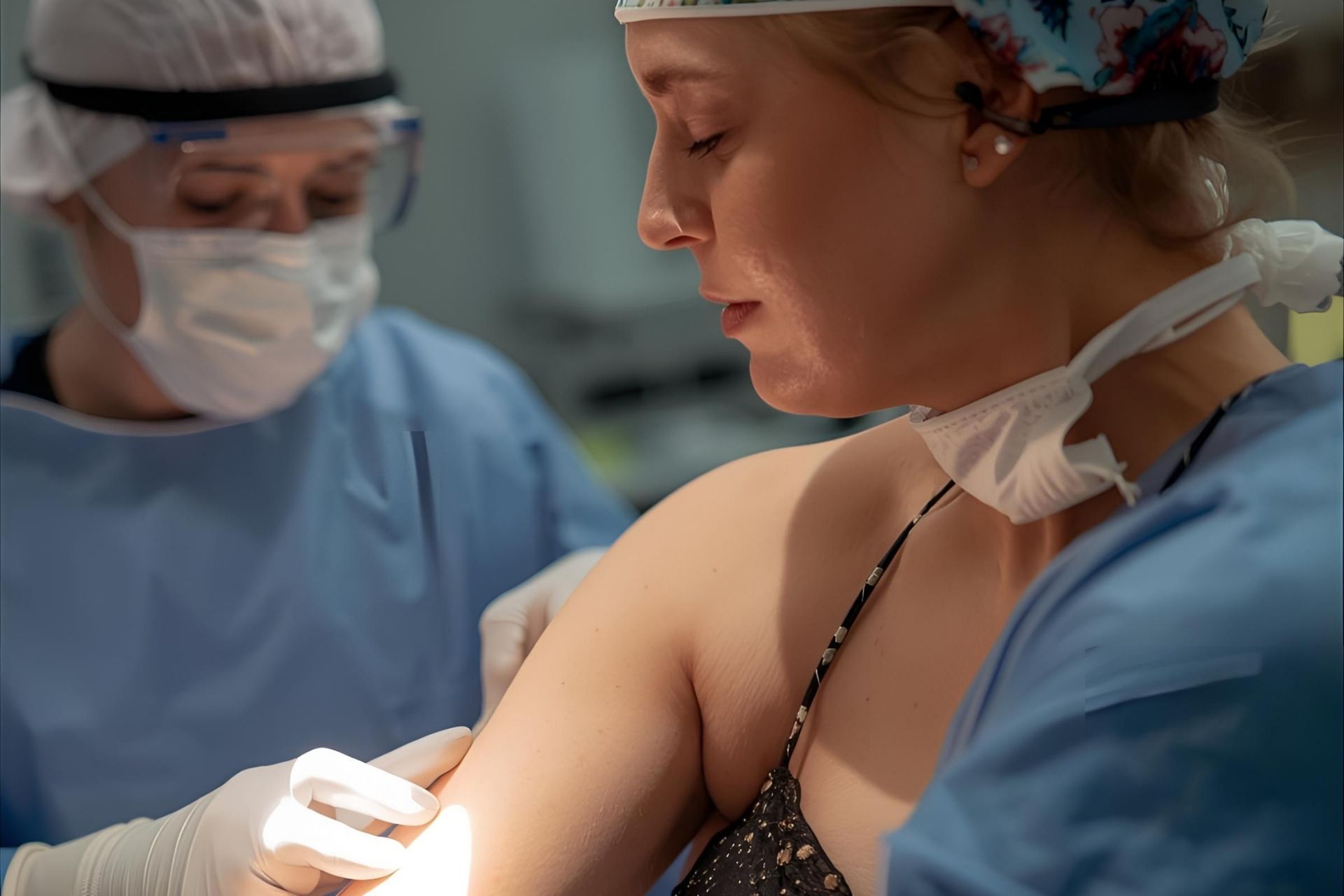The demand for arm lift surgery (brachioplasty) has significantly increased, fueled by the rising number of post-weight loss patients and revolutionary surgical advancements. New techniques and technologies are offering patients better results with less visible scarring and shorter recovery times, expanding the procedure’s appeal to a wider range of candidates.
Groundbreaking Minimally Invasive Techniques
The most significant innovations in brachioplasty focus on reducing the required incision length and replacing traditional excision with technology-assisted skin tightening. These less invasive approaches address the primary deterrent of arm lift surgery: the long, noticeable scar.
Radiofrequency-Assisted Liposuction (RFAL)
RFAL, often referred to by device names like BodyTite, represents a major leap in arm contouring. This technology uses thermal energy to liquefy fat while simultaneously stimulating collagen production, leading to notable skin contraction and a lifting effect without extensive skin excision.
- Principle: Bipolar radiofrequency energy is delivered beneath the skin to cause fat coagulation and significant skin tightening.
- Benefit: Effective treatment for patients with moderate skin laxity and excess fat who wish to avoid a traditional, long incision scar.
Mini and Invisible Brachioplasty
For patients with mild to moderate skin laxity, surgeons can now perform a minimal incision arm lift, or mini brachioplasty. These procedures limit the skin excision to a much smaller area, with the resulting scar often concealed entirely within the armpit (axilla).
The development of techniques that prioritize scar concealment, sometimes called “invisible arm lifts,” has made the decision to pursue surgical arm contouring easier for many individuals.
Advanced Scar Management and Surgical Planning
Modern surgical methods focus not only on the contour of the arm but also on optimizing the appearance of the inevitable scar, which has traditionally been a major patient concern.
Improved Suturing and Wound Closure
The introduction of specialized materials, such as barbed suture technology, allows surgeons to close incisions with less tension on the skin surface. Reduced tension is a critical factor in promoting a finer, less visible scar line during the healing process.
Integration of Ancillary Technologies
Procedures often incorporate other energy-based devices to refine results and improve recovery. These advanced tools are essential for achieving the sculpted look desired by modern patients.
- Laser-Assisted Liposuction: Used to melt fat and induce a mild degree of skin contraction.
- Fractional Laser Treatments: Applied post-operatively to improve the texture and color of the evolving scar.
| Technology/Technique | Primary Benefit | Ideal for |
|---|---|---|
| Radiofrequency-Assisted Lipolysis (RFAL) | Significant skin tightening with minimal incisions. | Moderate skin laxity, excess fat. |
| Mini-Brachioplasty | Minimal incision scar, often hidden in the armpit. | Mild to moderate skin laxity. |
| Barbed Sutures | Reduces tension on the wound, leading to finer scars. | All surgical brachioplasty types. |
Tps Clinic Expert Warning
While new technologies have dramatically improved results, patients must understand that these minimally invasive options are not suitable for everyone. Patients with massive weight loss and significant skin redundancy will still require a traditional or extended brachioplasty to achieve effective contouring. A comprehensive evaluation by a board-certified plastic surgeon is non-negotiable to determine the safest and most effective technique for your specific degree of skin laxity.
Frequently Asked Questions (FAQ)
What is the biggest factor driving the increase in arm lift rates?
The rise in successful massive weight loss patients, particularly post-bariatric surgery, is a major driver of demand.
Does RFAL completely eliminate the need for a surgical incision?
RFAL requires only tiny port incisions for the cannula but eliminates the long incision of a traditional brachioplasty.
Is an arm lift combined with liposuction considered a new technique?
Combining the two procedures is standard practice to achieve optimal fat reduction and skin excision.
Can a mini arm lift correct the “bat wing” appearance?
A mini arm lift can improve mild to moderate sagging but is insufficient for significant “bat wing” correction.
Are the scars from a mini arm lift truly “invisible”?
No scar is truly invisible, but the short incision of a mini arm lift is strategically concealed in the armpit crease.
How does laser treatment help with the arm lift scar?
Fractional laser treatments can be used after surgery to help the resulting scars flatten and blend with the surrounding skin.
How long is the recovery time for a minimally invasive arm lift?
Recovery for a minimally invasive procedure is typically shorter, often allowing a quicker return to daily activities within one to two weeks.
Who is the ideal candidate for non-excisional skin tightening like RFAL?
The best candidates for RFAL have good skin quality with a mild to moderate amount of excess fat and skin laxity.
Do newer surgical techniques reduce the risk of complications?
Minimally invasive options generally carry reduced risks of wound healing issues and downtime compared to extensive excisional surgery.
